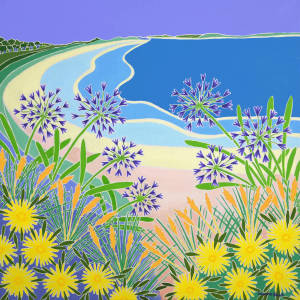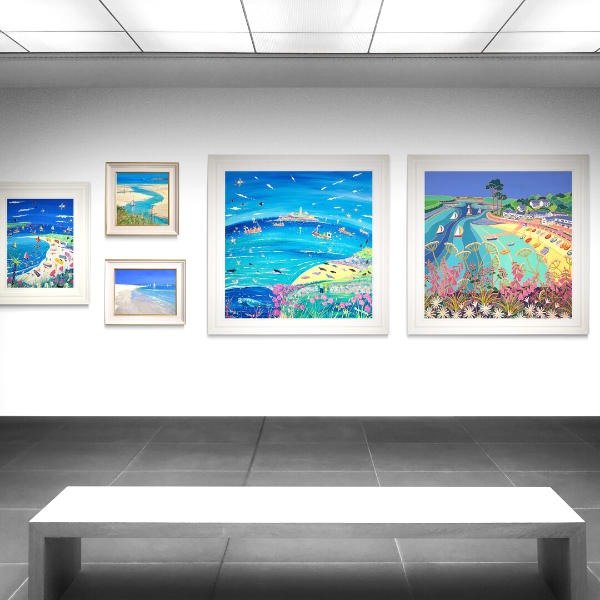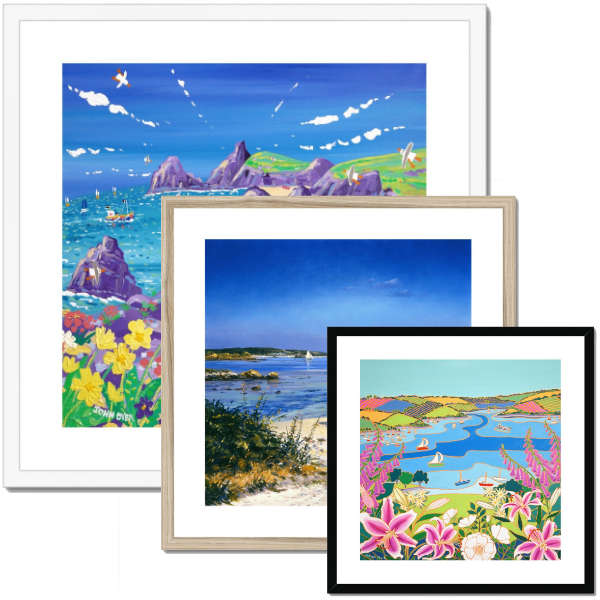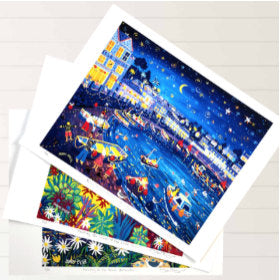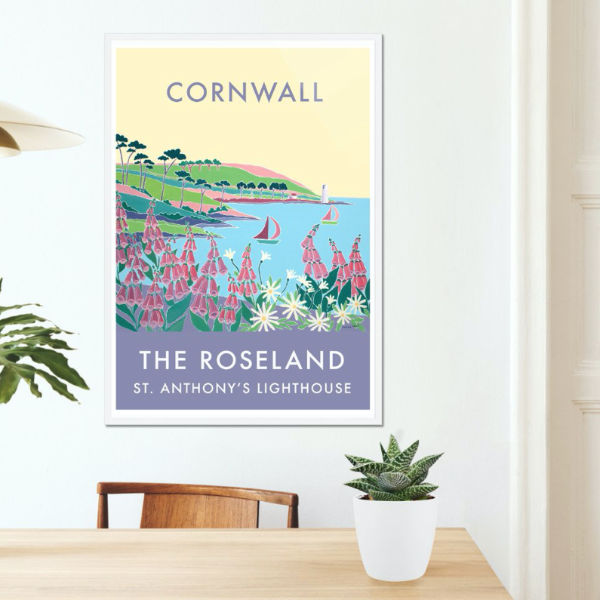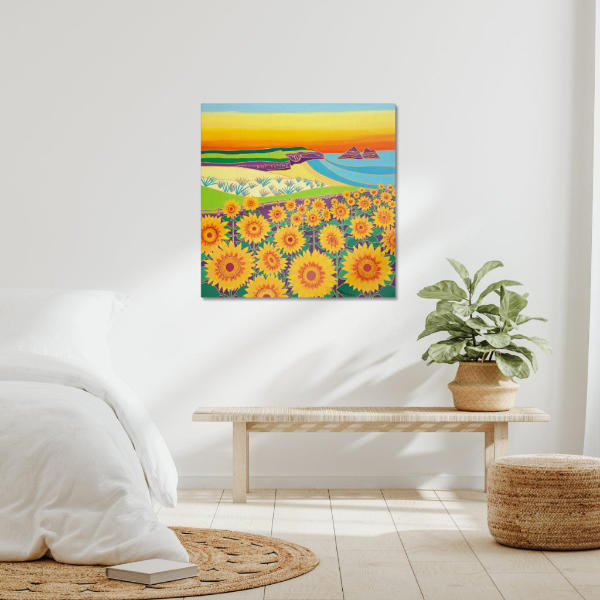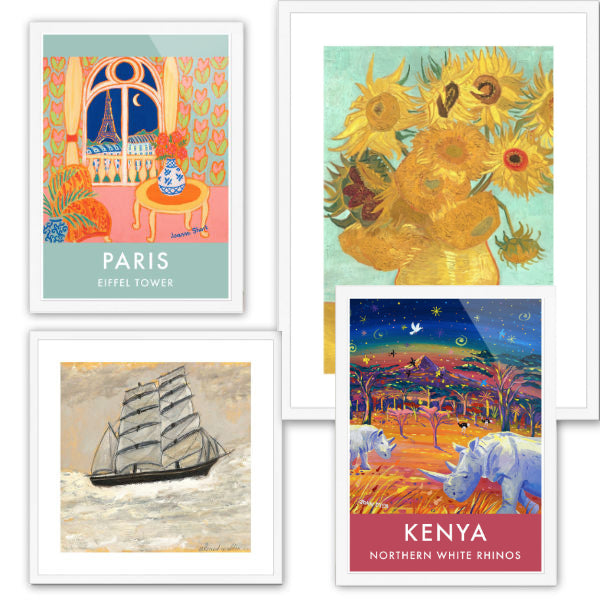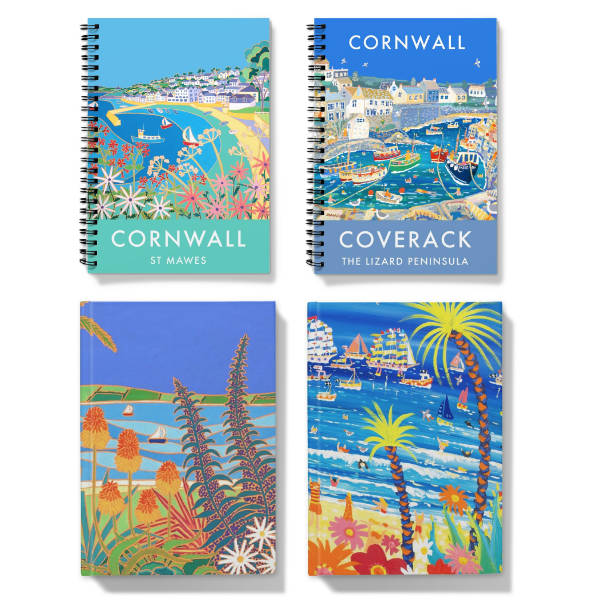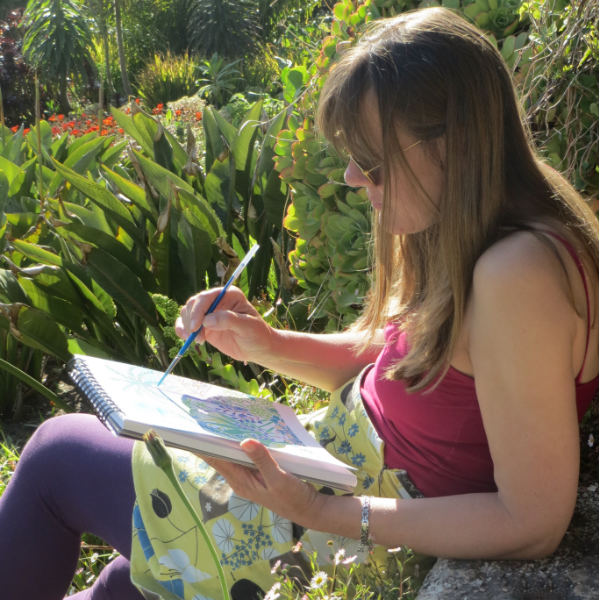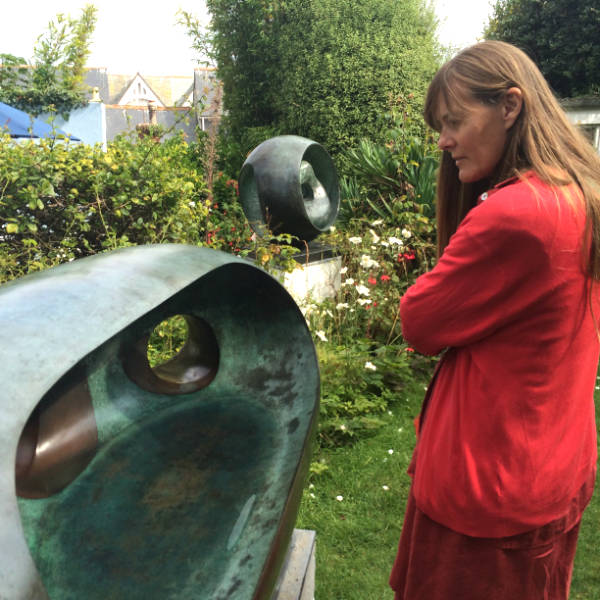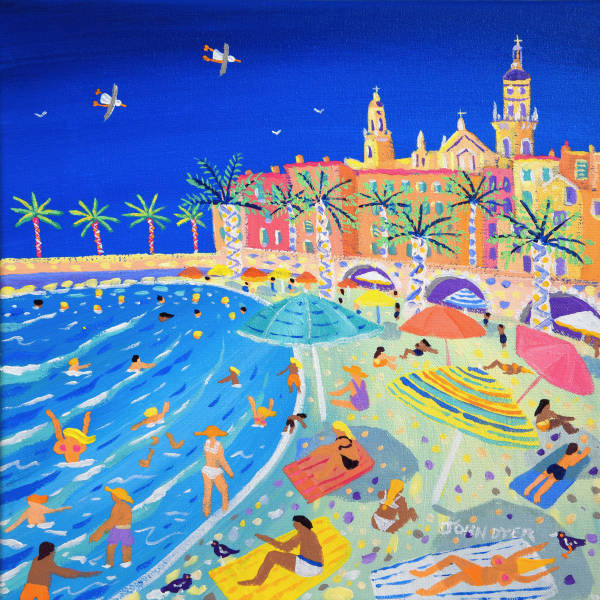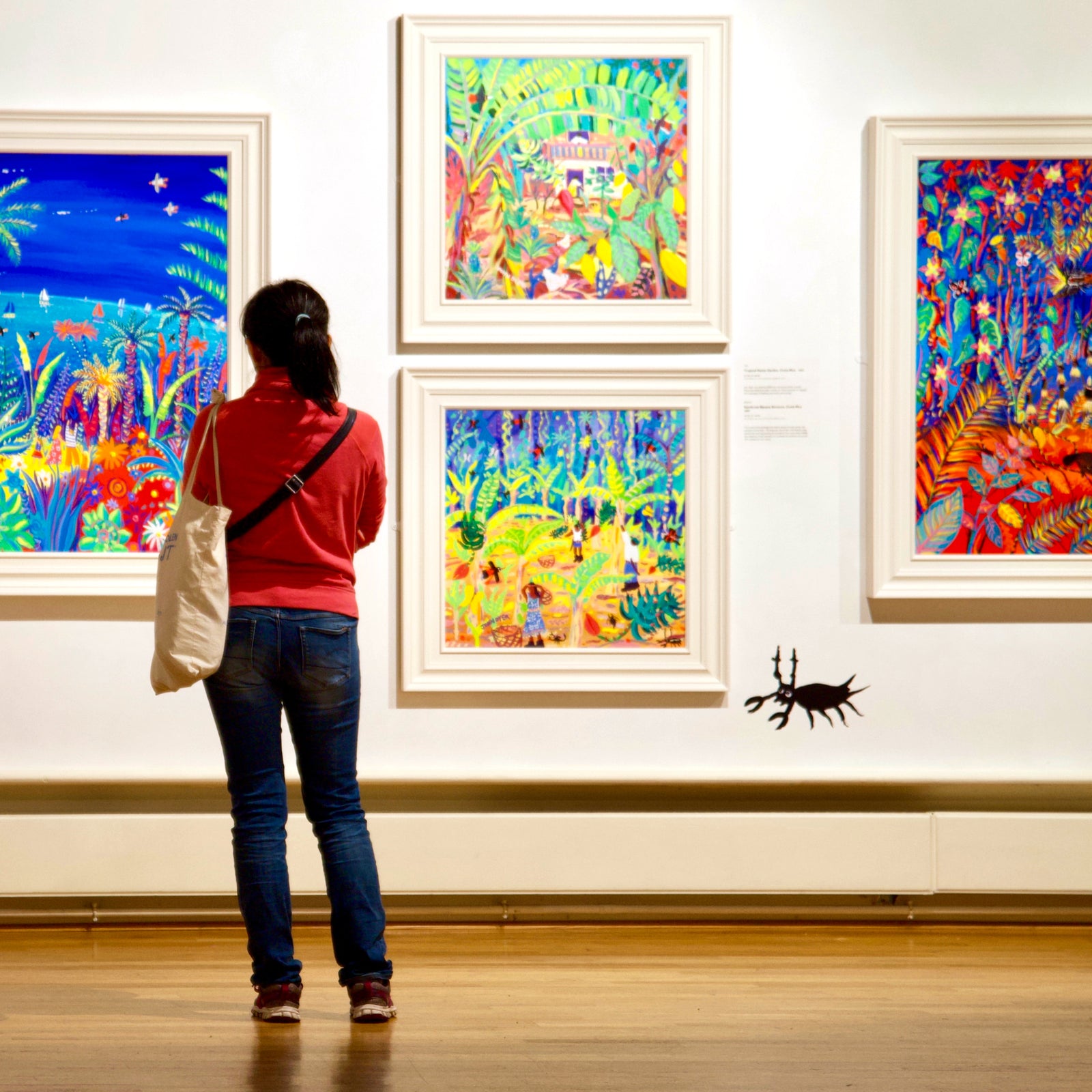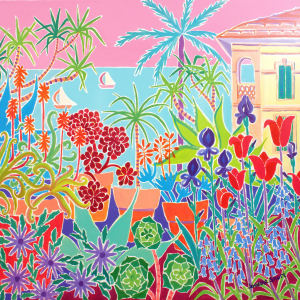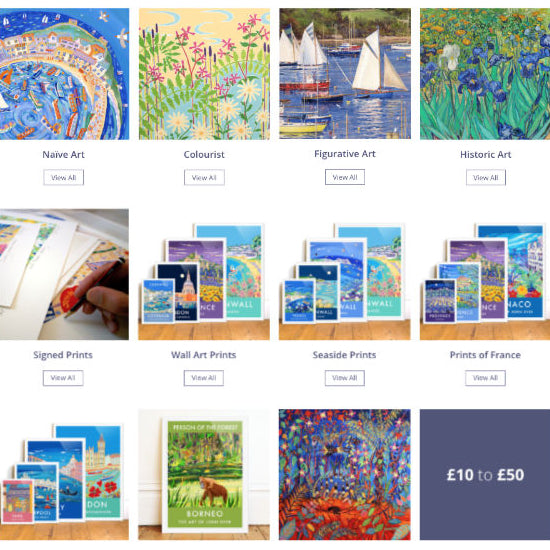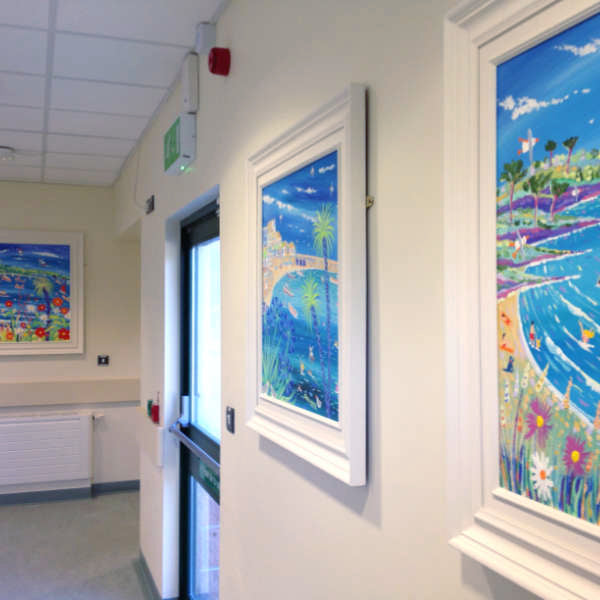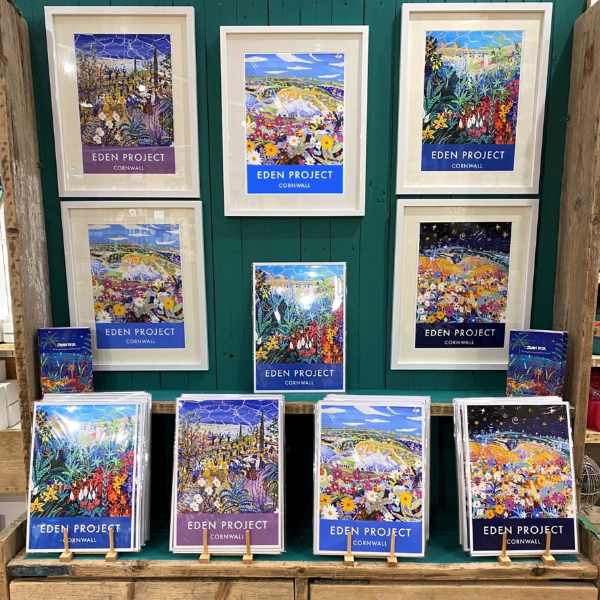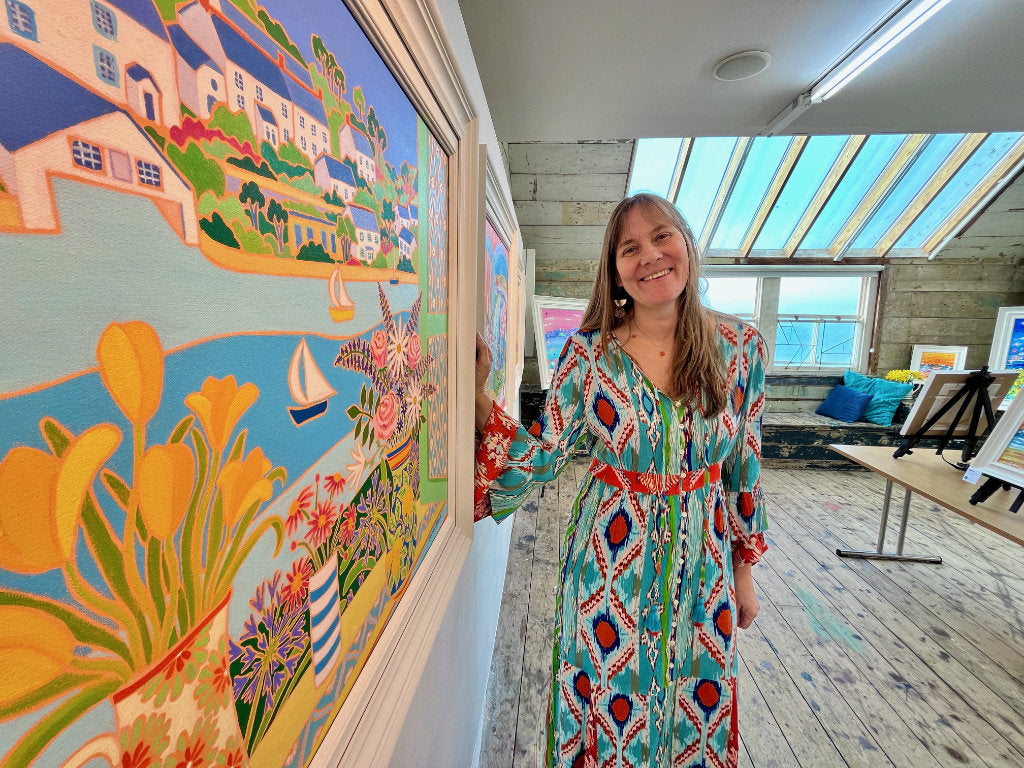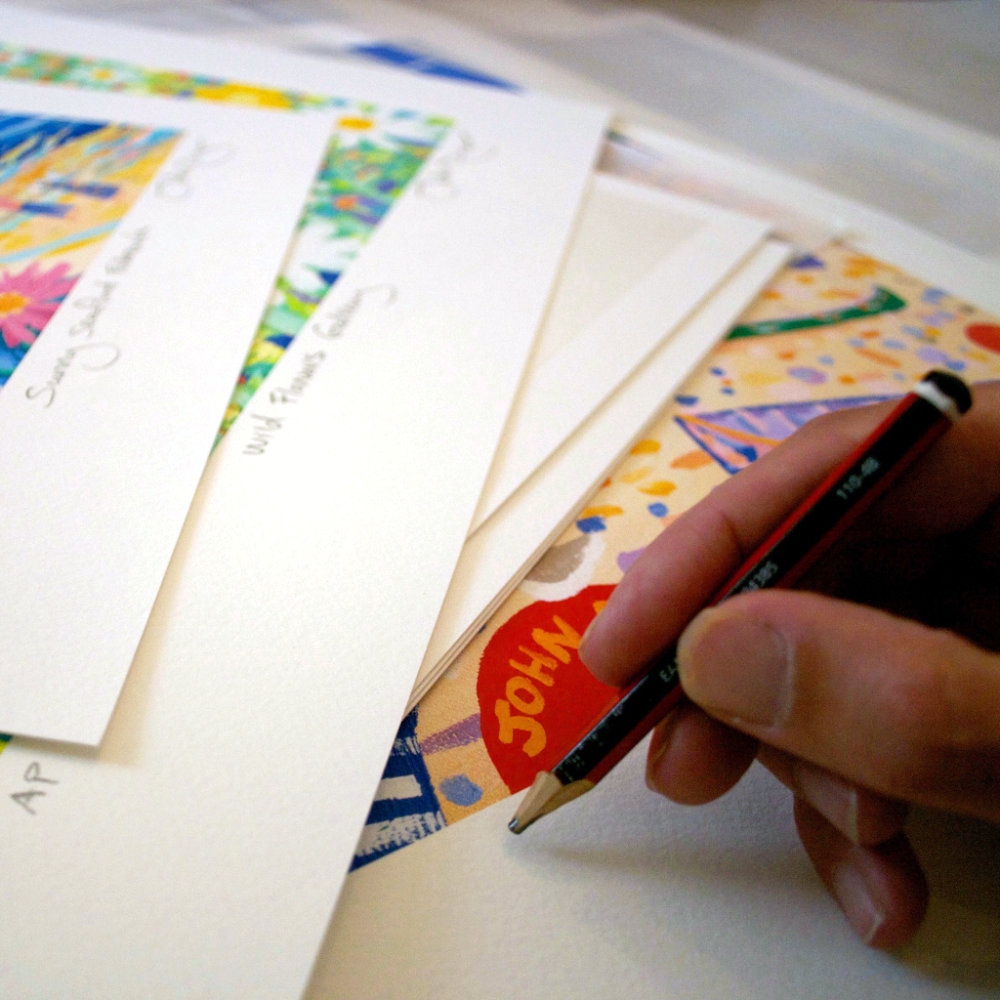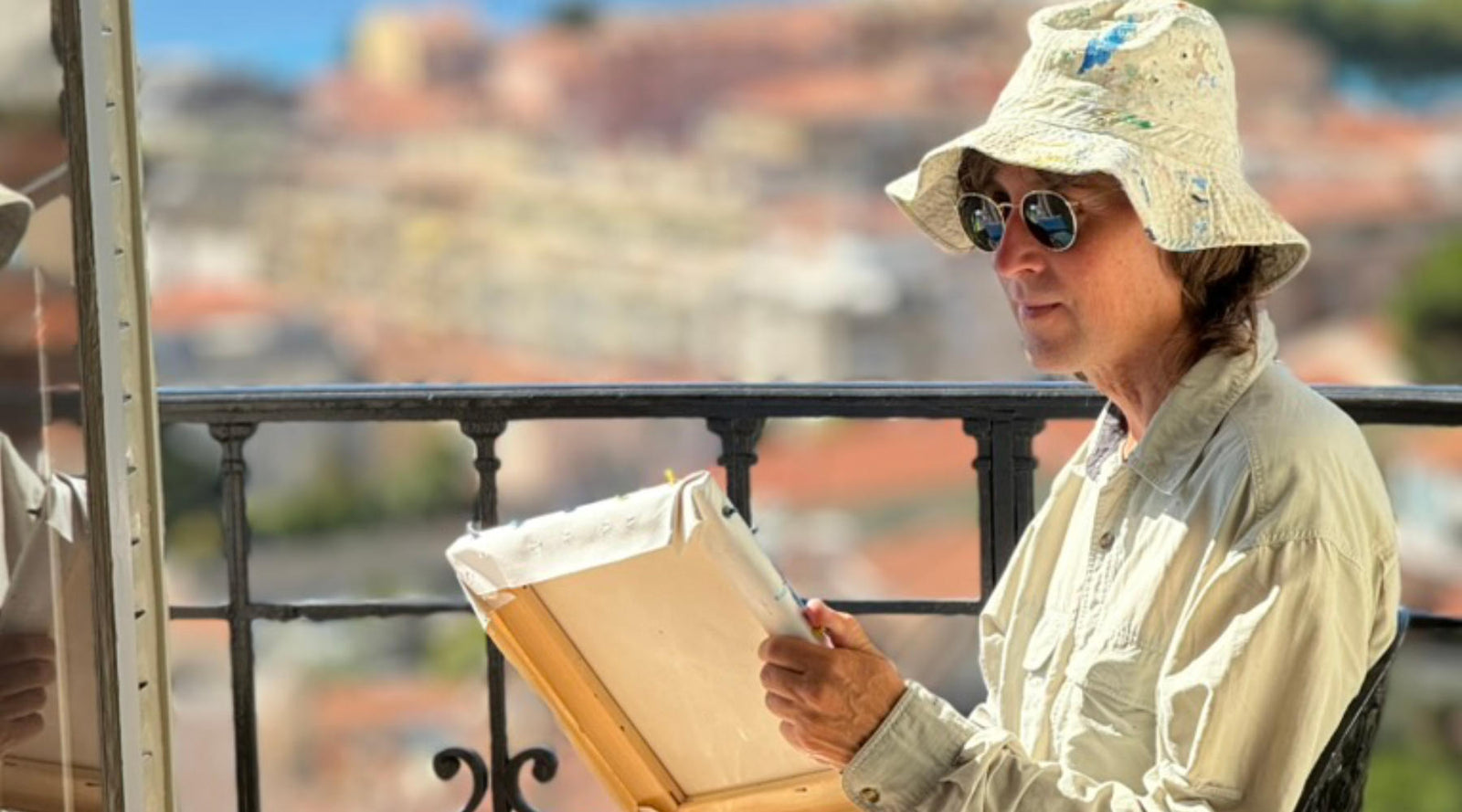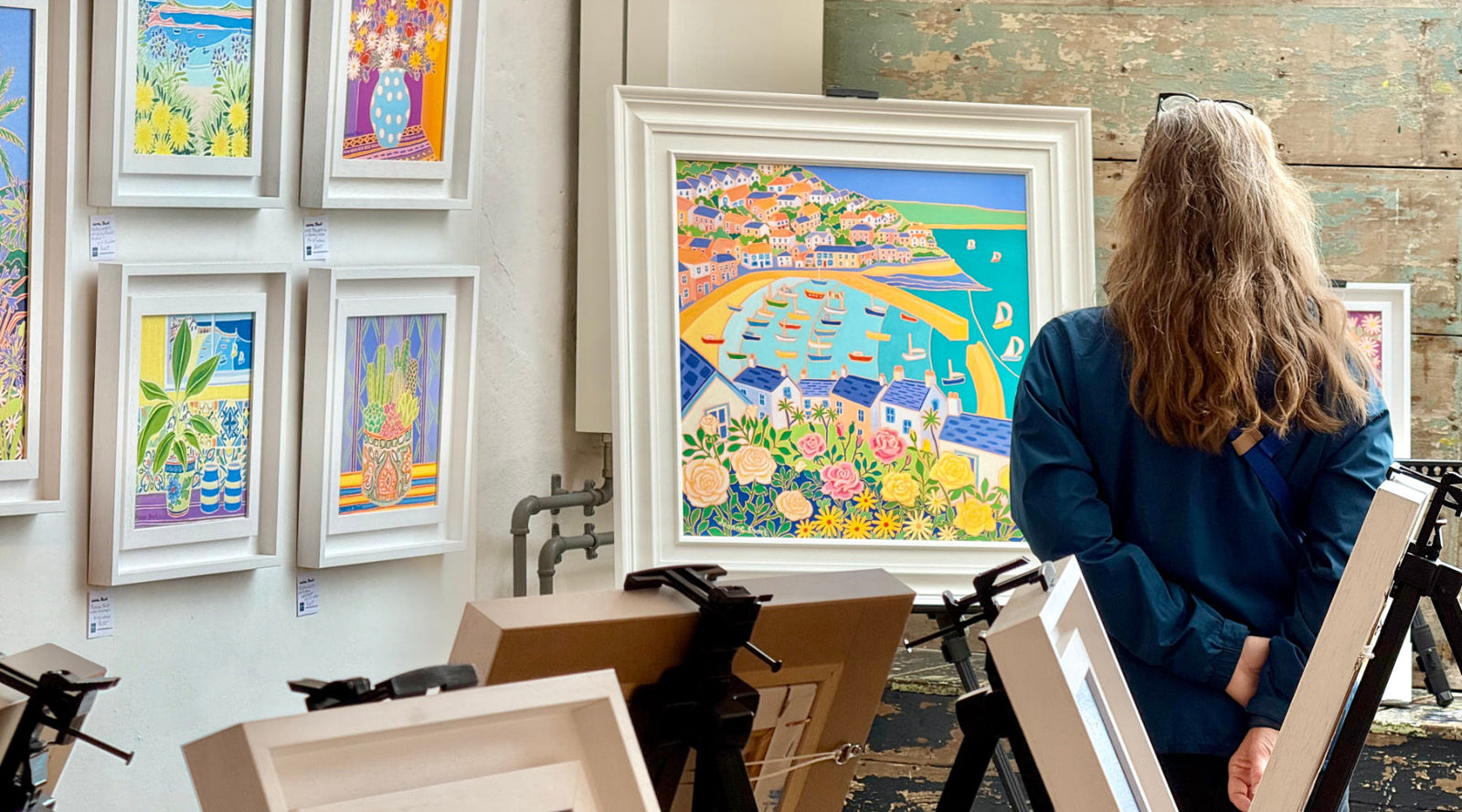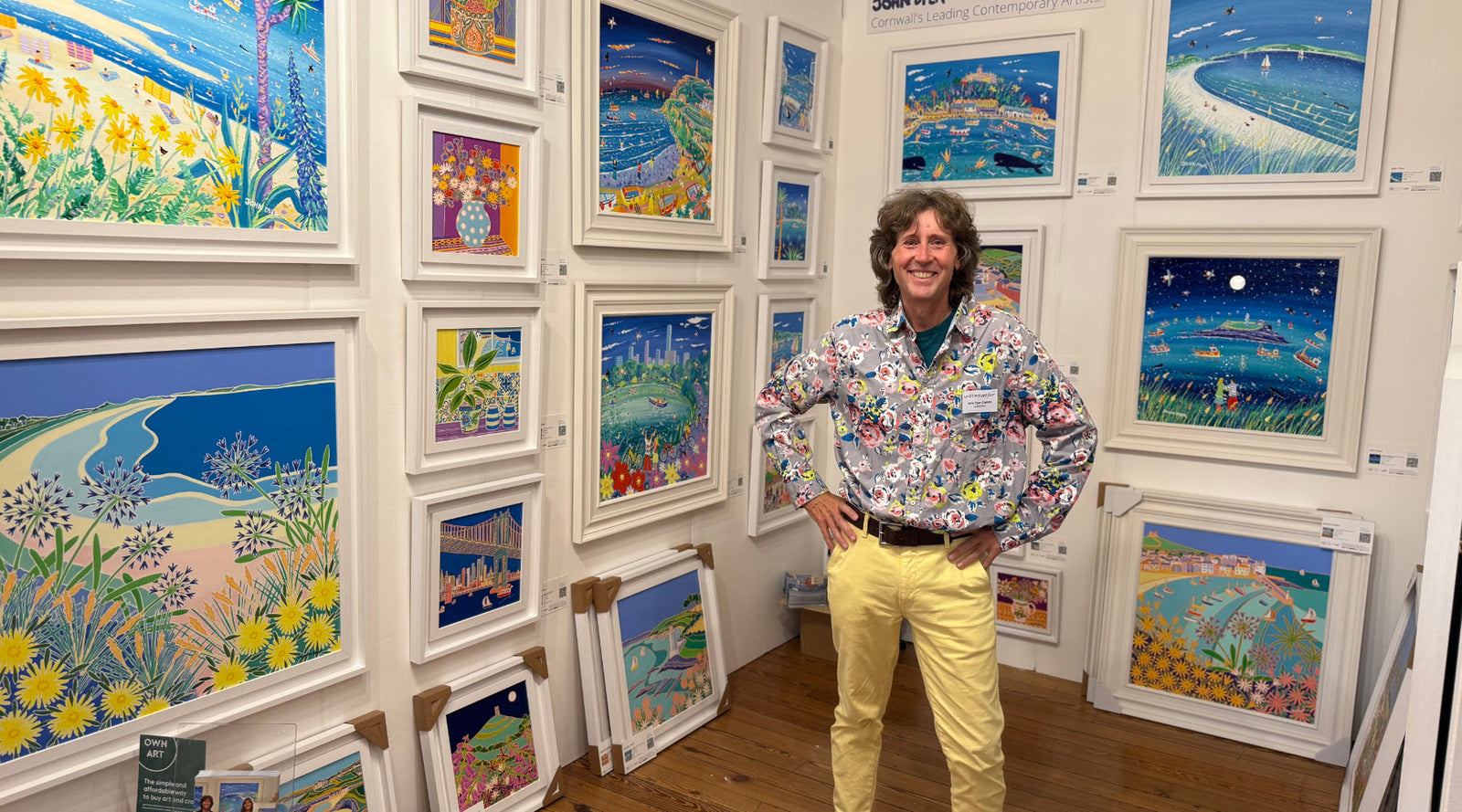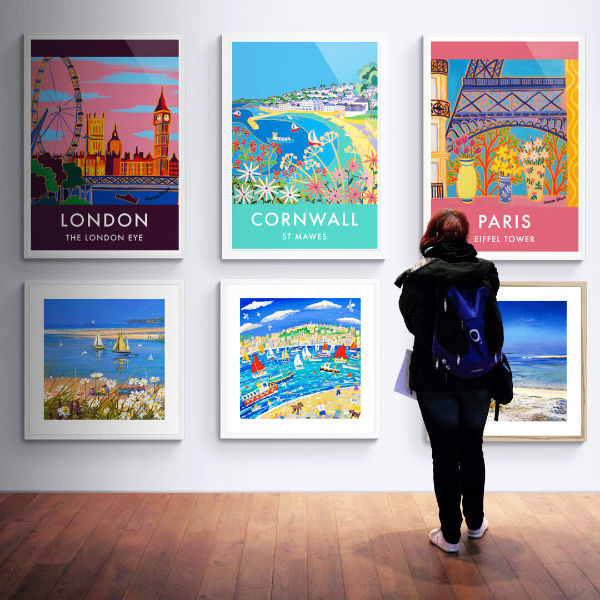
Above: Artist John Dyer pictured in Corfu, Greece
Want to transform your home with Greek wall art? Discover the types, themes, and sources for authentic Greek art pieces that infuse your space with classical charm.
Buy Greek Wall Art Prints Online
Above: Greece Artwork Wall Art Poster Print by John Dyer. 'Strolling Past Corfu Cats, Agios Gordios, Greece'. Buy online
Key Takeaways
-
Greek wall art has evolved through various historical periods, each contributing unique styles and techniques, from the geometric art of the Pre-Homeric period to the realistic and emotionally expressive works of the Hellenistic period.
-
Popular types of Greek wall art include canvas prints, murals, and tapestries, each offering distinctive aesthetic and functional benefits to enhance home décor.
-
Common themes in Greek wall art encompass mythological scenes, scenic landscapes, and everyday life, capturing the essence of Greek culture and natural beauty to bring a touch of Greece into modern interiors.
Above: Pandora by Odillon Redon
Painting the Greek Landscape
Scenic Landscapes
Scenic landscapes hold a special place in Greek wall art, showcasing the natural beauty and cultural landmarks of Greece. These artworks often feature stunning coastal views of the Greek islands, vividly capturing:
-
The sea and marine life
-
The azure waters
-
The golden beaches
-
The picturesque harbours
These landscapes are rendered in exquisite detail, transporting viewers to the serene and idyllic settings of the Mediterranean.
Above: Achilles Discovered by Ulysses among the Daughters of Lycomedes (1630-1635) by Peter Paul Rubens
Iconic landmarks like the Parthenon, Mount Olympus, and the blue-domed churches of Santorini are frequently depicted in historical Greek wall art. These representations not only highlight the architectural marvels of Greece but also evoke a sense of history and grandeur. Many of these prints are reproductions of sketches made by artists immersed in the Greek landscape or historically by artists depicting the narrative of Greek Mythology.
The details in these scenic landscapes help capture the essence of Greece, from the vibrant colours and clear waters of the Aegean Sea to the tranquil rural vistas. These artworks serve as a window to the rich cultural and natural heritage of Greece, allowing you to experience its beauty and serenity right in your own home. Whether you prefer the bustling charm of a coastal village or the peaceful solitude of a mountain retreat, Greek wall art can help you find the perfect scenic landscape to enhance your living space.
Corfu
John Dyer and Joanne Short were lucky enough to visit Corfu and have created a small collection of fantastic paintings, prints and posters.
Above: Open edition prints of Corfu by John Dyer
Corfu, known as Kerkyra in Greek, is one of the most beautiful and verdant islands in the Ionian Sea. Renowned for its lush landscapes, Corfu is covered with olive groves, cypress trees, and a variety of wildflowers that bloom throughout the year. The island's rich history is reflected in its architecture, with influences from Venetian, French, and British rule evident in the charming Corfu Old Town, a UNESCO World Heritage site.

Above: Artists Joanne Short and John Dyer in Corfu Town, Greece
The island boasts stunning beaches with crystal-clear waters, ranging from the sandy stretches of Glyfada and Paleokastritsa to the pebbly shores of Barbati and Kassiopi. Corfu's coastline is dotted with picturesque villages and secluded coves, perfect for exploring by boat or on foot.
Whether you're seeking relaxation on pristine beaches, adventure in the lush countryside, or a taste of rich cultural history, Corfu offers a diverse and captivating experience for all who visit. John and Joanne visited Corfu Town and Gouvia in the east and Agios Gordios on the western side of the island. In their work you can see the soft colours of the buildings and the warm light flooding the images.
Corfu Artistic History
16th century Art
Corfu’s artistic tradition began to flourish in the early 16th century. During this period, the "Cretan School" of painting was established on the island of Crete. However, the Ottoman conquest of Crete led many artists to seek refuge in Corfu, bringing their skills and artwork with them.
Today, visitors can admire the works of renowned iconographers such as Michael Damaskinos, George Kotzias, the Corfiot hagiographer Emannouil Tzanfournaris, and Angelos the Cretan in various churches and the Byzantine Museum on the island.
19th Century
The British influence in Corfu dates back to the early 19th century when the Ionian Islands, including Corfu, were established as a British protectorate. This period, spanning from 1814 to 1864, brought about significant changes under British administration. One of the most lasting impacts is evident in the architectural landscape of Corfu Town, the island’s capital.
Above: A Distant View of the Citadel, Corfu by Edward Lear (1812-1888)
Corfu has long been a muse for numerous artists. Edward Lear, for instance, resided in Corfu for several years, and his book “Views in the Seven Ionian Islands” was published in 1863. Edward Lear first visited the island of Corfu in April 1848. He developed a passion for the beauty of the island and remained there from December 1855 until May 1857, completing many watercolours and sketches. His letters and journals written on Corfu offer a vivid commentary on the manners and mentality of mid-nineteenth-century British colonial society. They also provide a deeply moving account of an artist grappling with solitude while following a vocation.

Above: Corfu from Ascension, Corfu by Edward Lear 1812-1888
This watercolour captures the vista from the village of Ascension (now Análipsis), named after the hilltop chapel where the Feast of Ascension was observed. The scene is breathtaking, encompassing woodlands and olive groves, the Citadel, the sea, and the majestic Albanian mountains in the distance.
20th Century
Above: Corfu Cypresses (1909) by John Singer Sargent
From the early 19th century up until the Second World War, Corfu rivalled Capri and Mallorca as the preferred Mediterranean destination for the European elite. Strolling through the narrow streets of Corfu Town, one cannot help but admire the elegant Georgian and neoclassical buildings that adorn the city.
Above: Oranges at Corfu 1909 by John Singer Sargent
In the autumn of 1909, American painter John Singer Sargent spent six weeks on the island of Corfu with his sister Emily. During this time, he did a series of studies and paintings based around the area.
The Rich History of Greek Wall Art
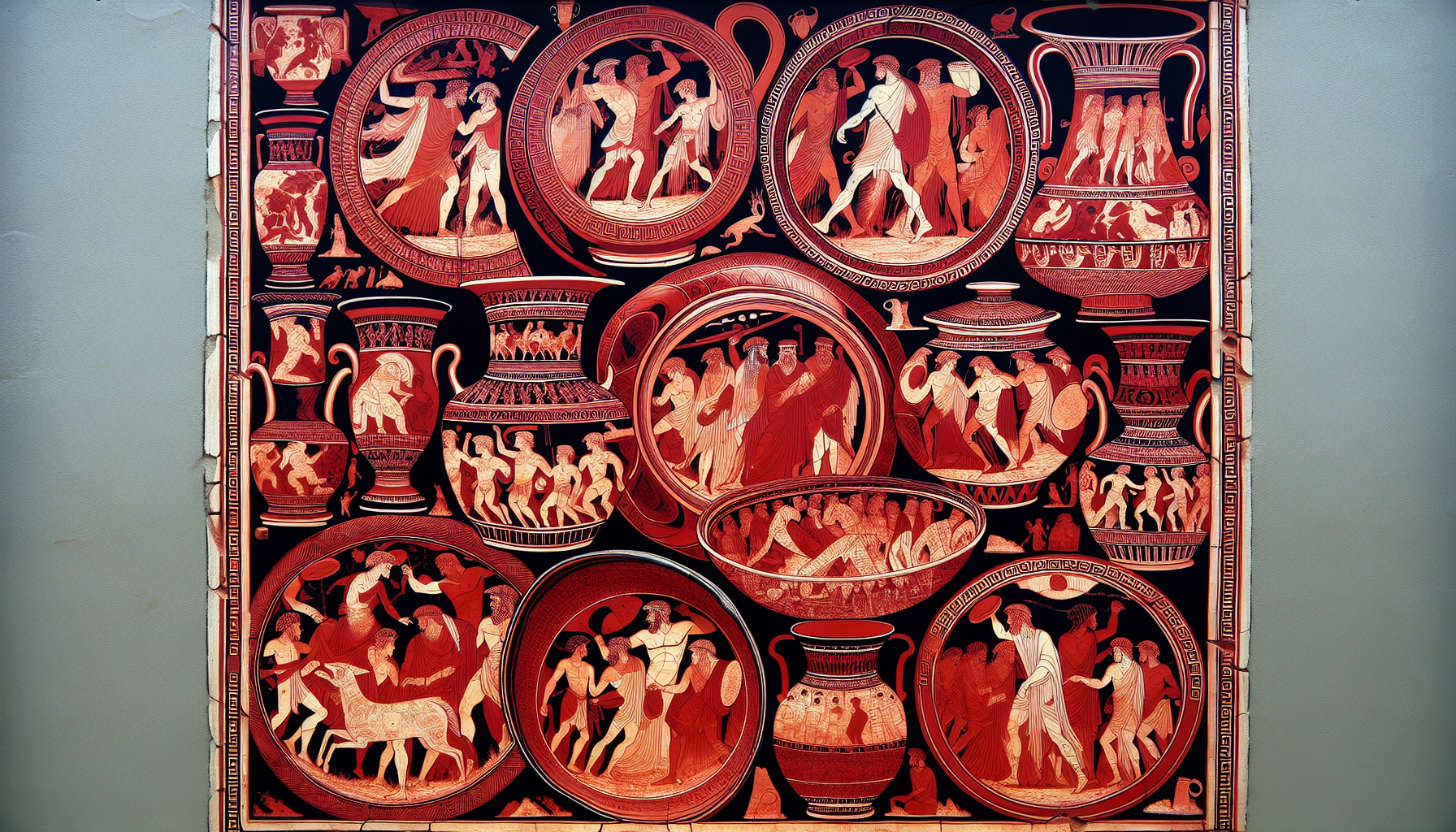
The history of Greek wall art, as diverse and profound as the civilization it originated from, traces its roots back to the Pre-Homeric period. During this time, the Cretan and Mycenaean civilizations laid the initial foundations of what would later evolve into one of the world’s most influential cultures. As we move into the Homeric period, geometric art emerged, characterised by simple shapes and patterns adorning pottery. This era set the stage for the more figurative and decorative styles that would follow.
During the Archaic period, the emergence of city-states coincided with a shift towards more intricate ceramic art. This time of prosperity and cultural development led to the Classical period, where Greek wall paintings became more detailed and realistic, depicting scenes that ranged from everyday life to grand mythological narratives. These works not only served as decoration but also as a means to convey stories and cultural values.
The Hellenistic period brought further advancements in Greek wall art, with a focus on portraying human emotions and a broader range of subjects. Murals and paintings from this era were often found in both private homes and public buildings, serving as a testament to the importance of art in Greek society.
Each period of Greek history contributed to the development of wall art, culminating in a rich tapestry of artistic expression that continues to inspire and captivate.
Types of Greek Wall Art
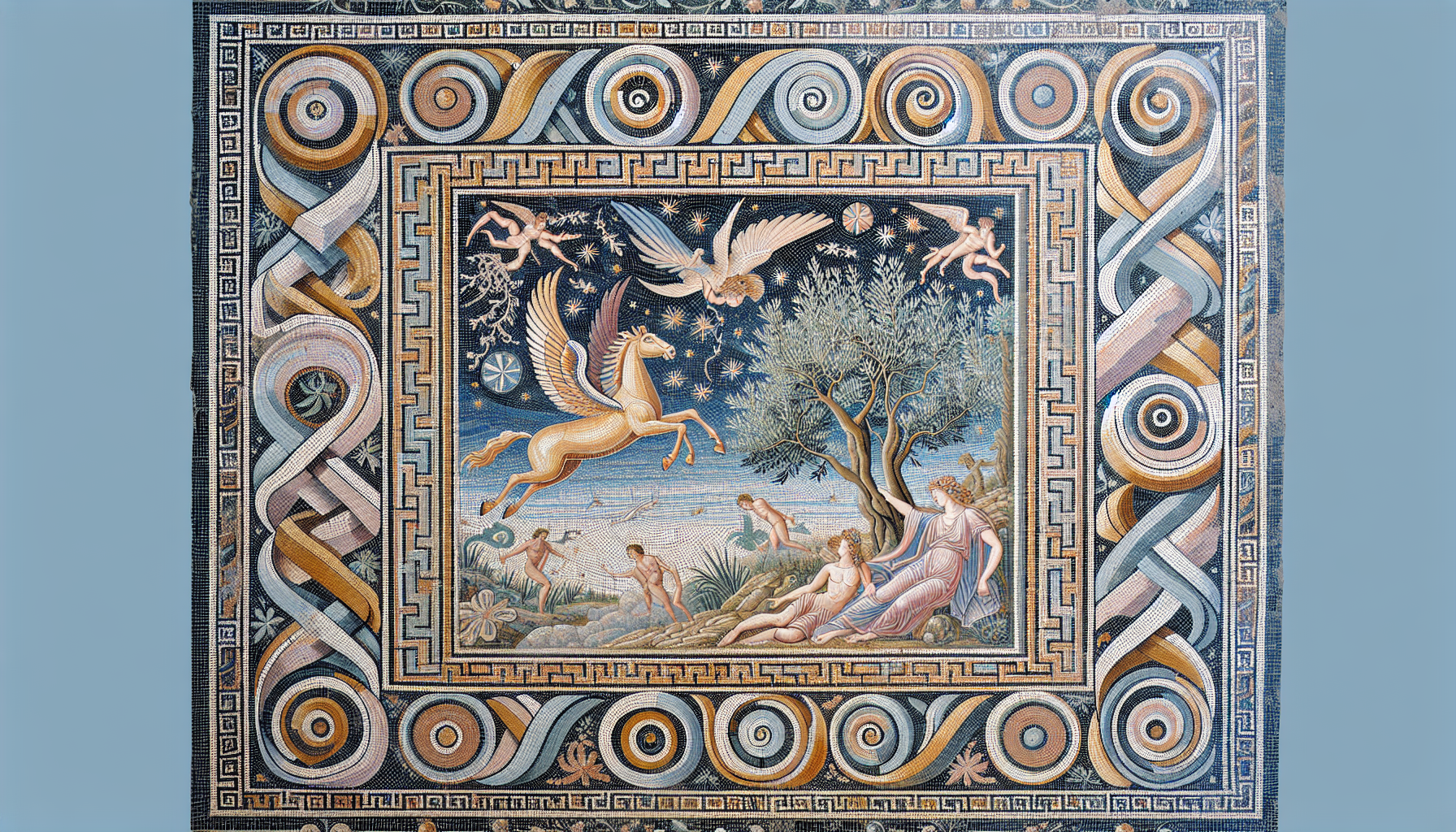
There are various forms of reproductions of Greek wall art, each with its unique aesthetic and practical attributes. Some popular choices include -
Canvas prints are favoured for their durability and vibrant colour retention. Modern techniques like high-quality giclée printing ensure that these prints capture the fine details and vivid colours of the original artworks. Their classic and sophisticated appearance evokes the charm of traditional paintings.
Murals are traditional large-scale artworks that can cover an entire wall. They can create a dramatic and immersive atmosphere in any space and can transform entire walls into large-scale scenes that often depict mythological or historical narratives. Traditionally created using fresco techniques, murals involve applying pigments onto wet plaster, resulting in a lasting and vibrant finish. These grand artworks can make a bold statement in any room, bringing a piece of Greece’s rich history and mythology into your home.
Tapestries are woven artworks that add texture and warmth to a room. They can be hung on walls or used as decorative throws. Tapestries are another form of Greek wall art that adds texture and depth to a space. These textile-based artworks often feature intricate designs and scenes from mythology, woven together to create a stunning visual narrative. Beyond their aesthetic appeal, tapestries can also serve practical purposes, such as:
-
reducing noise levels in a room
-
providing insulation
-
acting as a focal point in a space
-
adding warmth and cosiness to a room
Each type of Greece wall art offers a unique way to bring the beauty and culture of Greece into your living space.
Popular Themes in Greek Wall Art
Above: Study for 'Phylis and Demophoon' by John William Waterhouse 1905
Traditional Greek wall art often features a variety of themes that reflect both the divine and mundane aspects of Greek culture. Mythological scenes, scenic landscapes, and depictions of everyday life are common subjects. These themes not only provide a glimpse into ancient Greek society but also bring the light, colours, and atmosphere of Greece into any interior.
Many historical artists have used Greek mythology as a theme to their work. Many of these famous images can be purchased as prints and posters.
Above: The Birth of Venus by Sandro Boticelli
How to Choose the Perfect Greek Wall Art for Your Space
Selecting the perfect Greek wall art for your space involves considering several factors to ensure that the piece complements your room and becomes a focal point. If you have a spacious room, opting for larger pieces can create a stunning visual impact and prevent the room from feeling empty. On the other hand, for tall, narrow walls, vertical or portrait-oriented art can accentuate the wall’s shape and add a touch of elegance.
Above: John Dyer's wall art poster print of Corfu, 'Beachside Bliss, Corfu'. Buy online.
When positioning wall art above furniture, it is advisable to maintain the artwork’s width at approximately three-quarters of the furniture’s width and hang it 6 to 12 inches above the furniture. This placement creates a balanced and harmonious look, making the artwork a cohesive part of the room’s décor. Additionally, creating a gallery wall with multiple Greek art pieces can be a great way to display a collection while adding visual interest to the space. Using templates to plan the layout can help you fit the pieces perfectly.
Another factor to consider is hanging the art at eye level. A useful guideline is to position the center of the artwork at an average height of about 5’6”. This ensures that the art is easily viewable and creates a natural and comfortable viewing experience. Ultimately, the most important factor is to choose pieces that resonate with you and reflect your personal style. Many Greek prints, such as those by John Dyer, provide a connection to the Greek landscape and seascapes, adding a personal and cultural touch to your home.
Above: John Dyer open-edition fine art print of Corfu. 'Strolling Past Corfu Cats, Agios Gordios, Corfu, Greece'. Buy online.
Where to Find Authentic Greek Wall Art
Whether through exploring online platforms or visiting local galleries and stores, acquiring authentic Greek wall art can be a gratifying endeavor. Authentic pieces not only add aesthetic value to your home but also a piece of Greek culture and history.
Online platforms and local art studios offer various options to suit different tastes and budgets.
Online Marketplaces
Online marketplaces and art galleries like The John Dyer Gallery, feature a variety of options with unique Greek style wall art. The Gallery offers a wide selection of Greek-themed artworks by John Dyer and Joanne Short, including original paintings, posters and prints. We sell directly to buyers, ensuring authenticity and originality.
The main art collections at The John Dyer Gallery include:
The new collections feature a stunning range Corfu fine art prints and posters created by artist John Dyer, bringing the essence of the Greek landscape and seascapes into your home. These platforms provide a rich variety of options for those looking to add a touch of Greece to their décor.
Understanding Prices and Quality
Understanding the factors influencing the prices and quality of Greek wall art is crucial when embarking on your search. Here are some key factors to consider:
-
The reputation of the artist and gallery: Works by more renowned artists typically command higher prices.
-
Material quality: The use of high-grade canvas or premium paints, or ink and paper can affect the price.
-
Size of the piece: Larger pieces generally cost more due to the increased use of materials and the time required for their creation.
By considering these factors, you can make an informed decision when purchasing your wall art. At the John Dyer Gallery all our prints and posters are created using archival museum-quality inks and paper so that they can last a lifetime.
The complexity and detail of the artwork are other factors that can drive up the price. Original paintings have higher value and are unique. Additionally, works that are part of a limited edition or series tend to be priced higher than open edition items. By understanding these factors, you can make informed decisions when purchasing Greek wall art, ensuring that you get the best value for your investment.
How to Add Greek Wall Art to Your Home Décor
Above: Corfu, lights and shadows, by John Singer Sargent 1909
The inclusion of Greek wall art in your home décor can revitalize your living space, instilling a sense of cultural sophistication and historical richness. Using sea and sky imagery in Greek wall art can reflect the natural colour palette of the Aegean Sea on your walls and furnishings, bringing a sense of tranquility and beauty to your home. These colours can create a serene atmosphere, reminiscent of the Greek islands, to complement the artwork.
Hand-painted ceramics with Greek patterns or scenes are another excellent way to infuse your space with cultural artistry. These ceramics can be used as decorative items or functional pieces, adding both beauty and practicality to your home. By thoughtfully selecting and placing these objects and artwork, you can create a cohesive and aesthetically pleasing environment that celebrates the rich heritage of Greece.
Summary
Above: Framed Open Edition Art Print by John Dyer. 'Hector and his Amazing Trojan Horse without Wheels'.
Greek wall art offers a unique blend of historical significance, cultural richness, and artistic beauty. From the evolution of styles across different historical periods to the variety of forms and themes, Greek wall art provides endless possibilities for enhancing your living space. Whether you choose scenic landscapes, mythological scenes, or everyday depictions of the Greek landscape, each piece brings a touch of Greece’s legacy into your home.
By understanding how to choose, find, and incorporate Greek wall art, you can make informed decisions that reflect your personal style and preferences. The beauty and depth of Greek wall art can transform any room, creating a space that is both aesthetically pleasing and culturally enriching. Embrace the charm of Greek art and let it inspire and elevate your home décor.
Buy Greek Inspired Art Prints Online
Frequently Asked Questions
What are the main periods of Greek history influencing wall art?
The main periods of Greek history influencing wall art are Pre-Homeric, Homeric, Archaic, Classical, and Hellenistic, each contributing unique styles and techniques to Greek wall art.
What types of Greek wall art are available?
Different types of Greek wall art available are canvas prints, murals, and tapestries, each with its own distinct aesthetic and practical advantages.
Where can I find authentic Greek wall art online?
You can find authentic Greek wall art from independent artists on online marketplaces like Etsy, John Dyer Gallery, Saatchi Art, Redbubble, and Artfinder. Happy decorating!
How can I incorporate Greek wall art into my home décor?
You can incorporate Greek wall art into your home décor by using sea and sky imagery and colours to reflect the natural colour palette of the Aegean Sea and choosing hand-painted ceramics with Greek patterns or scenes to add cultural artistry.
What factors influence the price of Greek wall art?
The reputation of the artist, material quality, size, complexity, and whether the piece is part of a limited edition or series are the key factors that influence the price of Greek wall art. These factors contribute to the overall value of the artwork.


